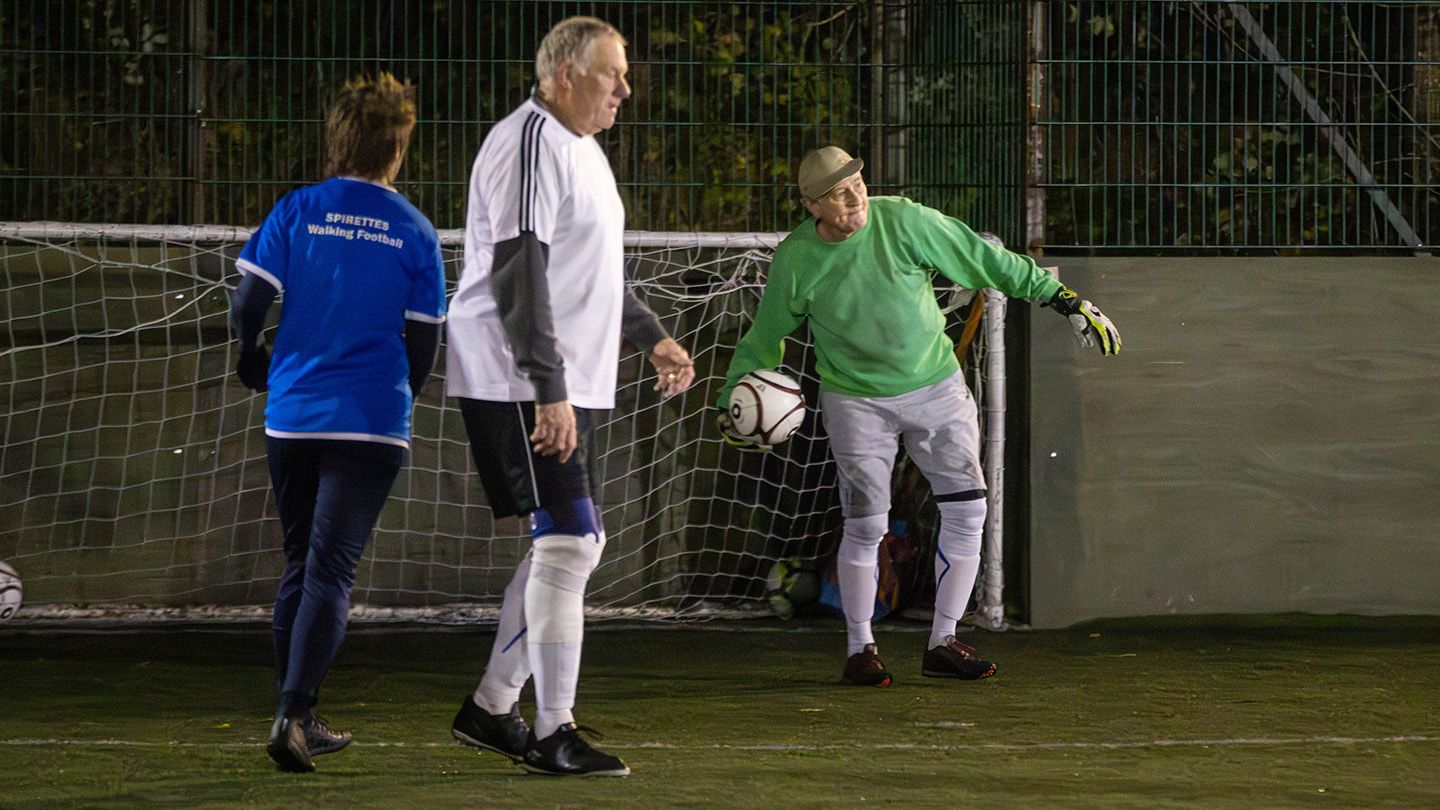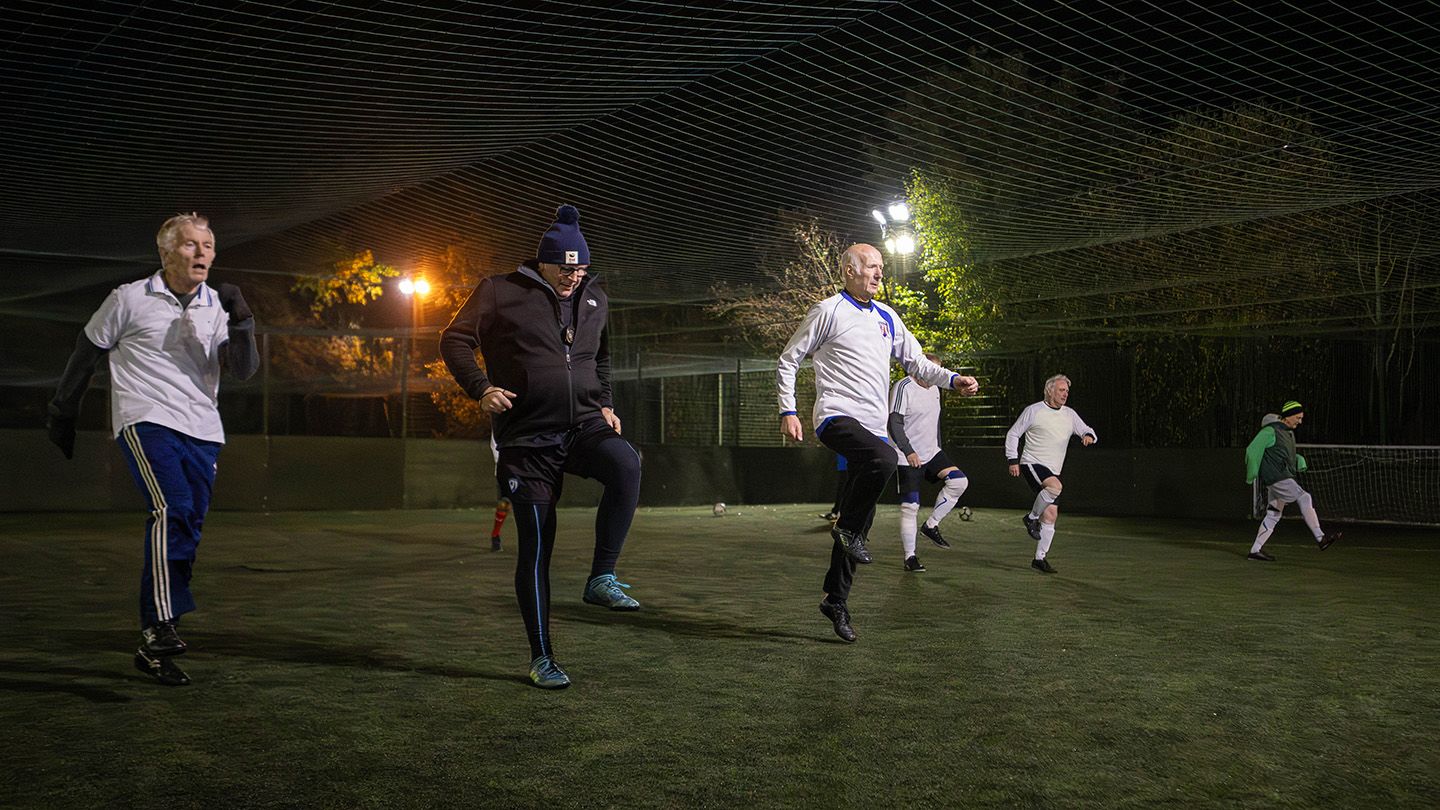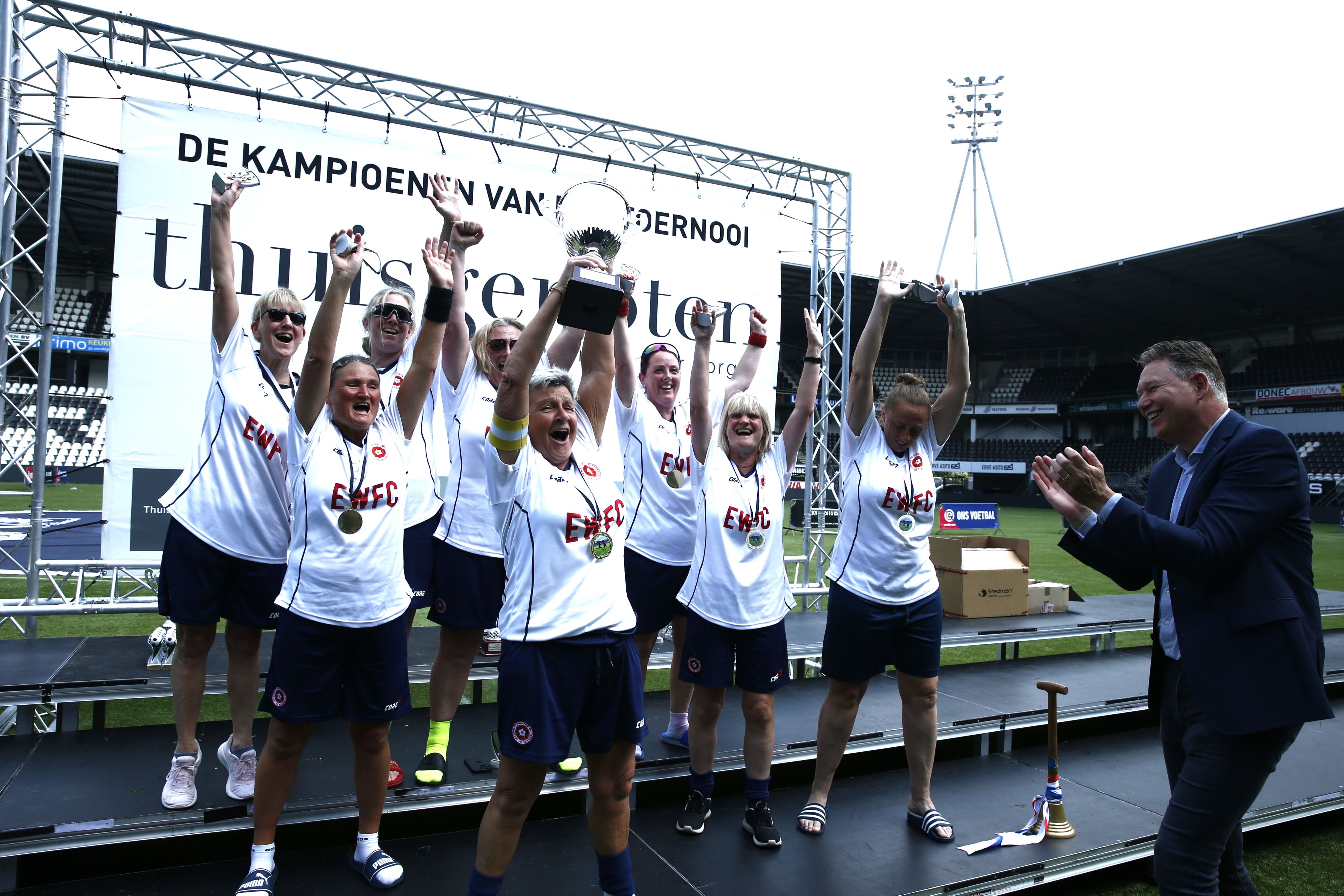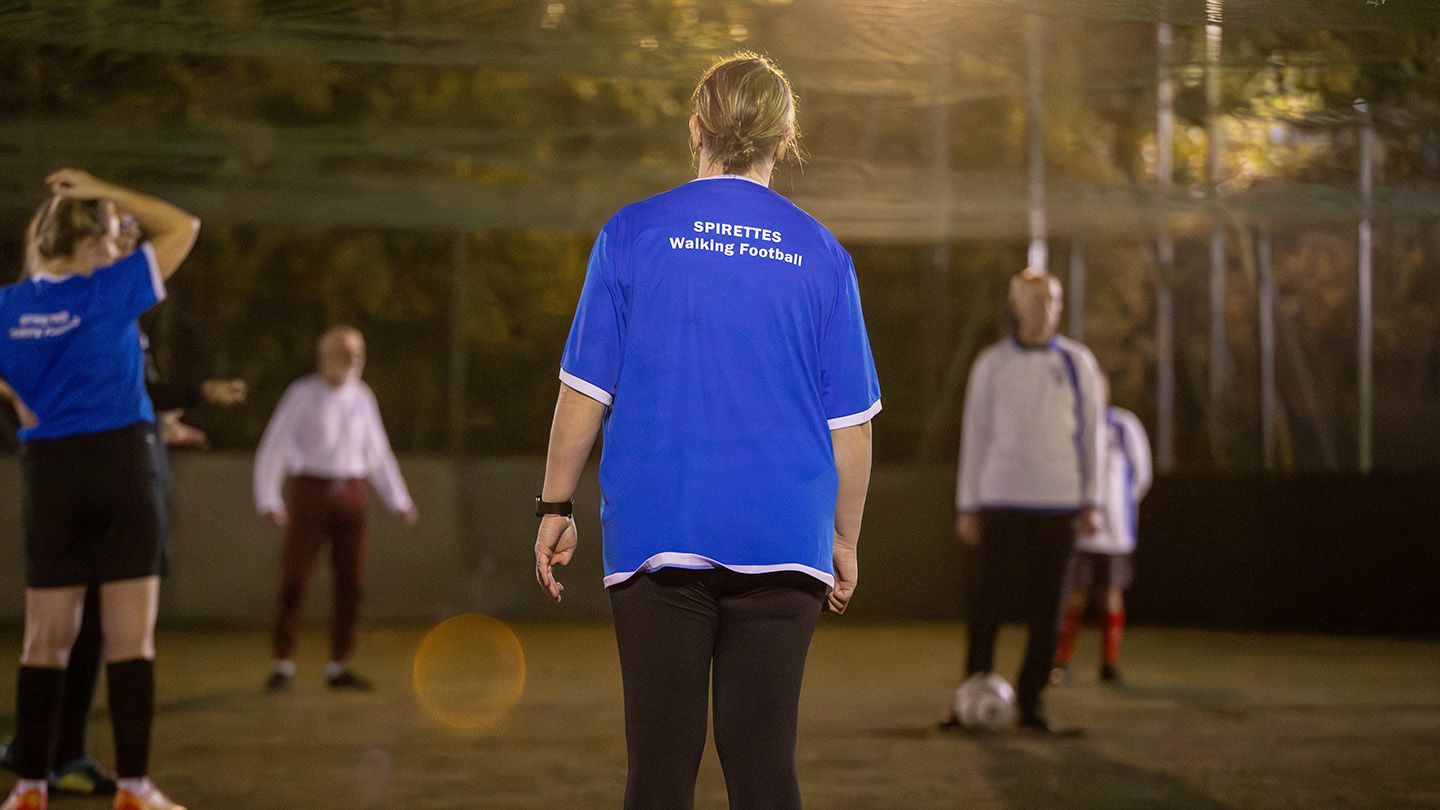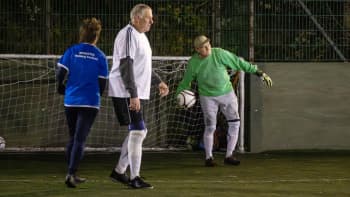Walking Football
Chesterfield FC Community Trust - The home of walking football

A Booming Evolution of
The Beautiful Game
Much like football itself, the origins of walking football lie in the heart of England. More specifically, they lie in the thoughts of John Croot as he returned to Chesterfield from an English Football League meeting at Manchester United's training ground.
On it’s surface, walking football is a simple sport that does exactly what it says on the tin. Underneath however, there are uncertainties that present as the sport rises to one played on an international level.
In this exploration, there is a focus on each level of walking football in the modern day, with an insight on how it reached that point and what the future holds.
With interviews from people in various roles at every single step of the ladder, there’s no doubting the breadth and quality of insights that will follow.
Beyond the bibs and cones, there are hardworking individuals that have put years of their lives into making walking football the sport it is today.
Much like any other sport, walking football is one that relies heavily on the efforts of volunteers and charities to ensure sessions and games go ahead. This piece has given said volunteers from multiple areas of the sport to voice their opinions on a sport that has seen exponential growth over the last 15 years.


The Creator
JJohn Croot and his colleagues at Chesterfield FC Community Trust are recognised as the creators of walking football.
John, who is CEO of the Trust and Chesterfield FC, recalled the the sport's origins, saying: “In 2010, we received some funding from the Football League. They’d got 35 chunks of £20,000 for clubs to bid to work with over 60-year-olds and we were successful in getting one of those.
“I went to a day at Manchester United’s former training ground, The Cliff, in Salford where they told us what we could spend the money on and it was very wide, really – the range of activities we could do.”
It didn’t take long for John to come up with an idea, linking two seemingly obvious thoughts into one concept.
“Coming back from Manchester, I was thinking, ‘what can we do’? I thought football was obvious for us (the Trust) - it always has high participation numbers – so how can we make football accessible to older people?
“I went to our coaches and said,‘ Look, I’ve got this idea – walking football’. They laughed.”
Before they progressed, the team decided to research walking football, searching the internet and contacting other club’s Community Trusts, but there was nothing similar offered.
“So the concept was born, really,” said John. “We sat down, came up with some rules and we put on the first sessions at Queen’s Park Leisure Centre (in Chesterfield).
Senior Spireites FC walking football team warming up pre-game. Photo: Tina Jenner
Senior Spireites FC walking football team warming up pre-game. Photo: Tina Jenner
“We ran it for a few months and it was going really well and then Sky Sports got to know about it.
“After that, we had an explosion of interest really. We had leisure centre managers ringing up, we had other Community Trusts, charities, councils etc.
“Two or three years later, there was a Barclays Bank advert, featuring walking football. When those adverts had been on, there was another explosion in interest in it.
“It’s now grown to be probably the fastest growing sport in the world.”
Senior Spireites FC
The world's first walking football team
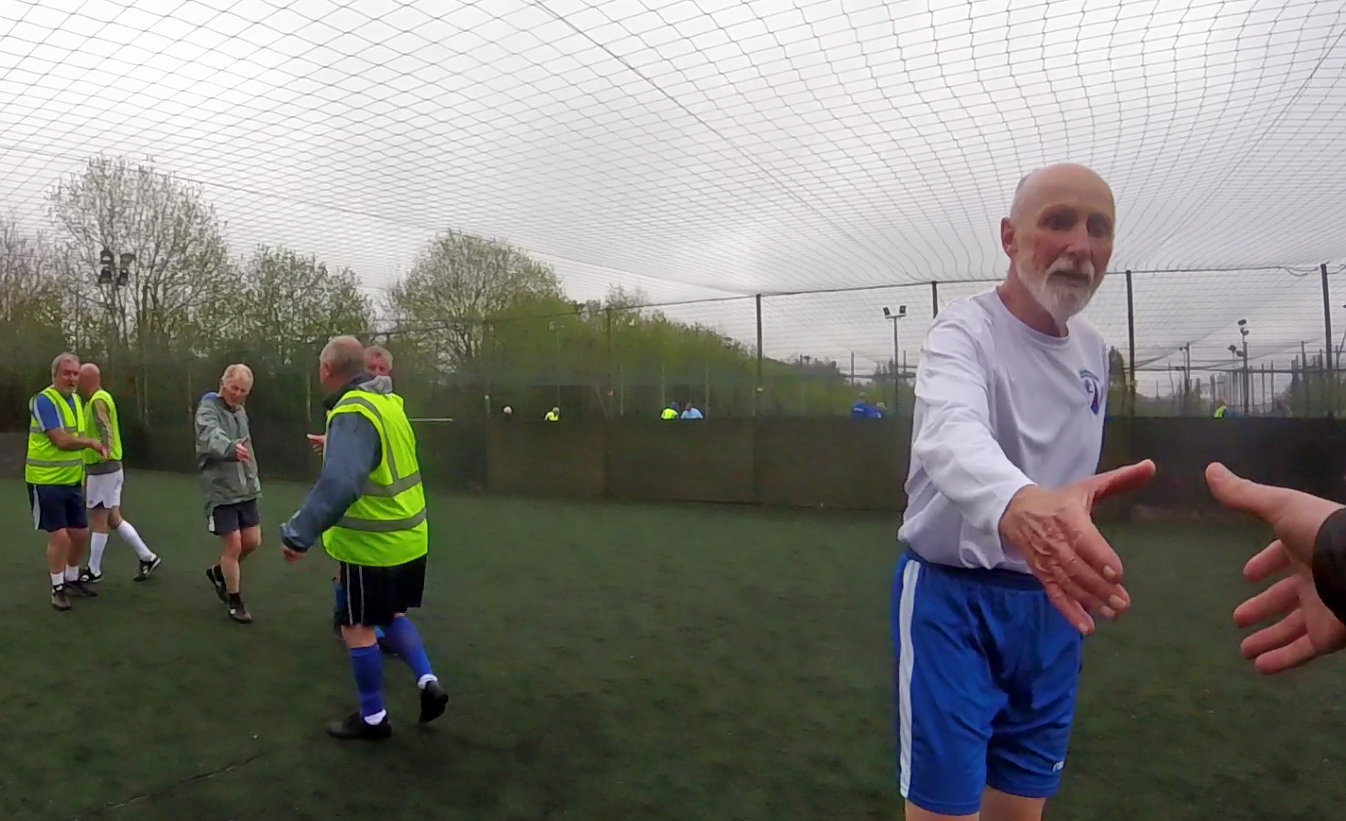
With the birth of the game already heavily linked with the market town of Chesterfield, the world’s first walking football club was formed – Senior Spireites FC.
Just a few miles down the road from Sheffield FC – the world’s oldest football club – Senior Spireites began life in 2013 and has grown from a handful of members, playing small-sided games, to 100 members over 50 years of age.
Club secretary Ian Edmundson said: “When I first started playing, we were lucky to get five or six. We’d pull the goals up to halfway and just play with that.”
The club and sport have grown massively since Ian began playing, resulting in a stark difference in his playing experience.
He added: “The most we’ve had (at one session) is just over 40. We normally get six teams at five or six-a-side.
“It’s been like that for a while now, but membership has just grown and grown. It’s up at about 140.”
POV footage from one of Senior Spireites FC's Walking Football sessions. Video: George Parr. Music by Bensound.com/free-music-for-videos License code: V64PG19OL5WR8Z1K
POV footage from one of Senior Spireites FC's Walking Football sessions. Video: George Parr. Music by Bensound.com/free-music-for-videos License code: V64PG19OL5WR8Z1K
Neil Haddy, who is the current vice president of the club, reflected on the beginnings, saying: “Back around 2010, John Croot set up the first sort of attempt at walking football.
“The following year, they had another go at it to see if they could get people who were interested.
“In the early days, we were richly subsidised by Chesterfield FC Community Trust.
“That went on for about two years and then the football club had some sort of financial problems and I think they just pulled the plug and we were left to start doing it ourselves.
“So we moved on from the start of 2013 and held our first annual general meeting in January or February 2013.”
After several attempts, the Senior Spireites in its current form was finally established in 2013 and the number of members continues to grow year on year.
An International Game
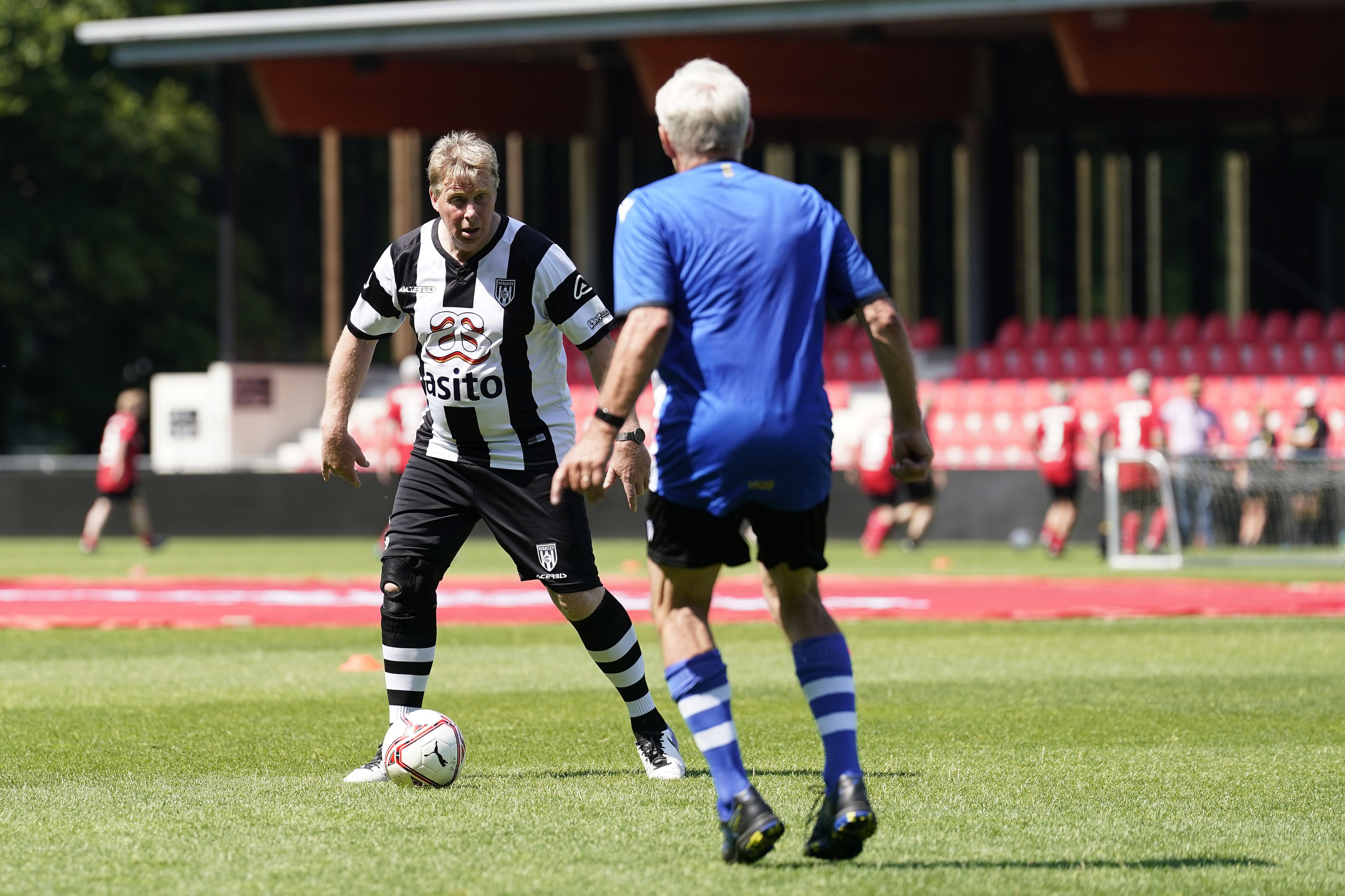
Dutch side Gold Star Heracles posing for a photo with Senior Spireites of Chesterfield. Photo: Ian Edmundson
Dutch side Gold Star Heracles posing for a photo with Senior Spireites of Chesterfield. Photo: Ian Edmundson
The opening ceremony of the 2023 Almelo City Cup. Photo: Huib Rouwenhorst
The opening ceremony of the 2023 Almelo City Cup. Photo: Huib Rouwenhorst
Walking football is no stranger to international events and tournaments, both competitive and non-competitive. One of which is the Almelo City Cup in the Netherlands.
Huib Rouwenhorst has been involved in the organisation of the tournament since its creation and has witnessed its growth over the last decade.
As the tournament has attracted international teams since its first run, Huib shared his thoughts from an organisational point of view, saying: “We said we had to make a tournament that when the players leave, they say that next year they want to be there again.
“For us, it’s very important to have good organisation. The players are more important than the organisation itself. You make it for them and you have to do everything to please them.”
He added: “In the first year, we had maybe eight teams from England. After that, there were teams from Germany and Belgium.
“How it is now, we have teams from France, Italy, Poland, Belgium, England, Germany, Scotland, etc.”
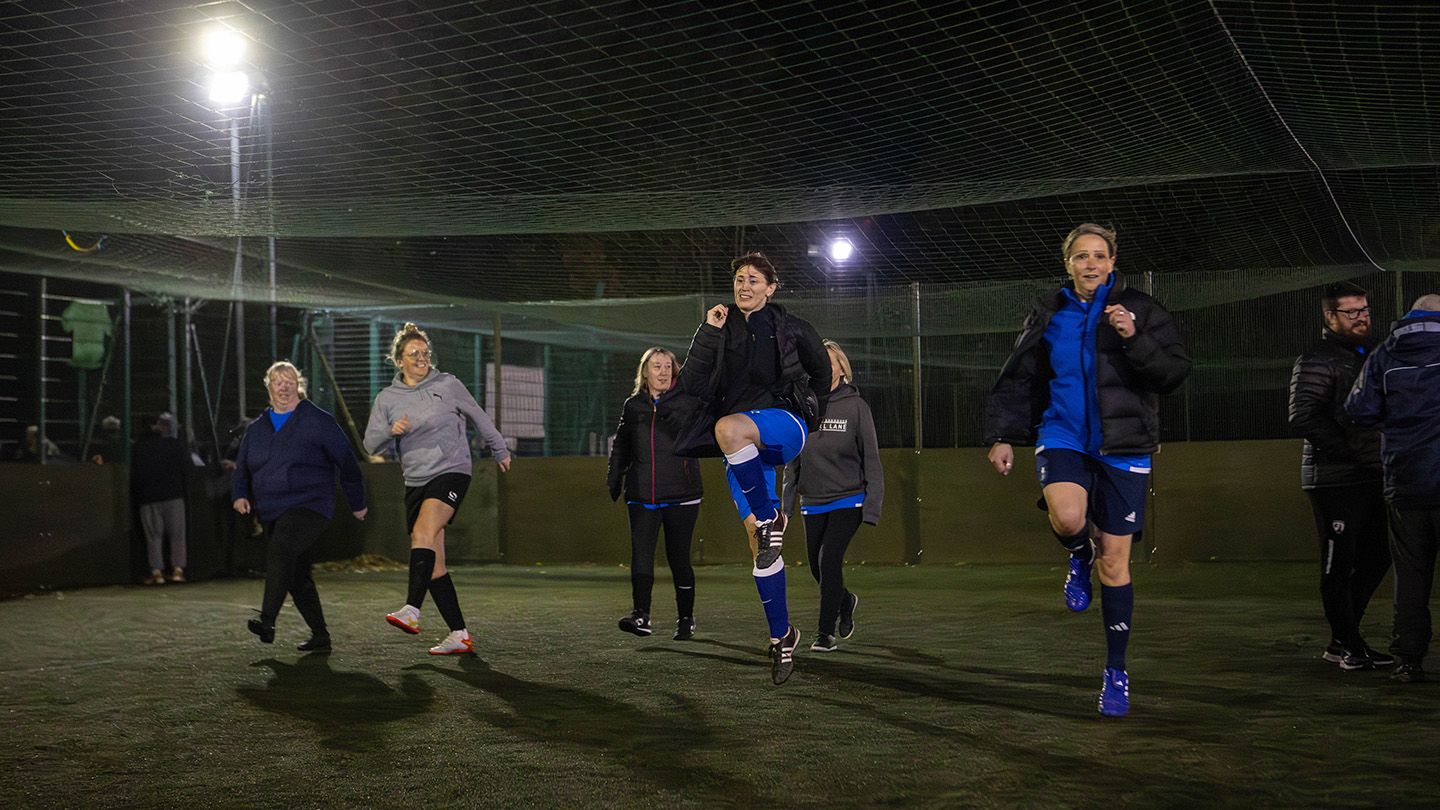

Women's Walking Football
Whilst women's football has seen a monumental growth in recent years, women's walking football has been on a similar journey.
Women's walking football coach Alyss Jackson on the pitch at Chesterfield FC's stadium. Photo: Tina Jenner
Women's walking football coach Alyss Jackson on the pitch at Chesterfield FC's stadium. Photo: Tina Jenner
Although the original players of walking football were mostly male, the female game has taken off too, citing the same physical and social benefits as the main reason for participation.
Alyss Jackson coaches the Spirettes walking football team, a women-only side linked with the Senior Spireites.
Speaking on the importance of women’s football and the reasons for its growth, Alyss said: “It’s future proofing, because it gives women of all-ages the opportunity to carry on playing even if you feel like your body can’t take 11-a-side anymore.
“Walking football, by all means, is not easy, you certainly know that you’re exercising and playing sport, but it’s that bit slower, that bit less physical.
“They (the players) are like a family. The comments you get from the women are about how much it means to them; how much they’ve made friendships and just brought people together through something that they never would have deemed possible.”
Almelo City Cup international Tournament Champions. Photo: Huib Rouwenhorst
Almelo City Cup international Tournament Champions. Photo: Huib Rouwenhorst
Generally, in the United Kingdom, most women’s walking football teams are for those aged 40+ and Huib Rouwenhorst compared the European scene with that of the UK.
He said: “(A lot of) ladies teams were starting in 2019 or so, in England. My question was, ‘Why do you start at 40 years’?
“They told me that in England, there is a long history with women’s teams not being as big as men’s teams. They were thinking that you could get more ladies by starting from 40 years.
“At our club, we also started in 2019 for those over 40 and at the moment we have 30 members, but most of them are over 50 and they have never played football before.
“In England, women are going to watch the England women’s team. But our (Dutch) ladies are going to the dancing, not to the football. That is our big difference.
“In Holland we have maybe six ladies teams and in England they have maybe 100 or more with both competitive and recreational. We (Holland) only have recreational.”
A mid-game shot of the Spirettes taking on Senior Spireites FC in a friendly game. Photo: Tina Jenner
A mid-game shot of the Spirettes taking on Senior Spireites FC in a friendly game. Photo: Tina Jenner
The Rules
One of the main areas where walking football differs from other sports is the rules.
Played only at an amateur level, walking football has not received platform governance.
Consequently, the sport has is being played under different rule sets, not just across the country but around the world.
In England, the governance is split with some people playing under the rules of the WFA (Walking Football Association) and some under the FA rulebook.
As a coach of walking football, this can become difficult, particularly when playing against sides who usually play under different rules.
On the governance situation in England, Alyss Jackson said: “In this country there are two sets of rules for walking football (WFA & FA).
“You play different clubs around the region and some go by one set of rules, some go by the other.
“They aren’t massively different but obviously when it comes to playing competitively, it can be a bit challenging at times.”
John Croot also downplayed any potential rules issue, adding: “I don’t see it as an issue. As long as it’s getting the outcomes of people playing it, they’re enjoying it and they’re playing it in the right spirit.
“That’s more important than whether a goalkeeper can go out of a six-yard-area or not.
“I know that a lot of places on the continent don’t play with goalkeepers.”
The differing governance and rules around the world is understandable for a new and amateur sport, but the reasons for such a situation in just one country has more depth to it.
John discussed how the FA was not initially interested in walking football, prompting the establishment of the WFA.
He added: “When it started gathering pace, I contacted the FA and they didn’t want to know.
“Now it’s grown to what it is, they’ve brought a strategy out, they’ve claimed to be the national governing body of it. It’s interesting that when I contacted them in the early days, I was turned away.
“I welcome their involvement; I just question as to why they can suddenly feel they’re the governing body of it when they didn’t want to know.”
On whether the sport can continue with two governing bodies, John said: “I think it can. Darts has got two governing bodies; I think boxing has as well. I tend to not take it too seriously, to be honest!”
As a coach in the sport, Alyss Jackson added: “Personally, I think it’s frustrating; not wanting to support something from the outset because they initially couldn’t see what benefits it could bring.
“The fact it incorporates a massive age group means that it’s going to involve a lot of people. So, I’m glad it’s opened their eyes to what benefits it really does have for the population as a whole.”
Walking Football's Future
As the man who launched it, John Croot also had his say on where he sees the sport in the years to come.
He said: “I don’t know, really. I’m not sure it would be able to keep growing at its current rate.
“I got contacted only from people in California and Canada. There was talk it might be included in the Invictus Games, which is probably a good route for it to go.”
After witnessing the international growth over the last decade, Huib Rouwenhorst added that he could only see it continuing. He said: “I think it will get bigger and bigger and bigger.
“In 2014 we started in Holland. In Belgium there was a little bit in 2015 and also in Germany. Now in Germany, every village has a walking football team.
“I also have contacts in Poland, and it’s also getting bigger and bigger there.”
In terms of the growth of the Almelo City Cup, Huib acknowledged that there was a ceiling to the growth of the tournament.
“We have said that the maximum for our tournament is 48. It becomes a family tournament.
“We have teams coming for the sixth or seventh time; every year they are in Almelo. We drink in the evening and we’re together.
“This is one family. When you make it bigger and bigger, you can’t have a family tournament.”
Whilst walking football certainly has its imperfections, it's important to remember its ever-evolving nature as it continues to develop around the globe, improving the physical and social health of the elderly generations.
As more and more people begin to partake in this wonderful sport, there's no doubt it will continue to be played for decades to come.
